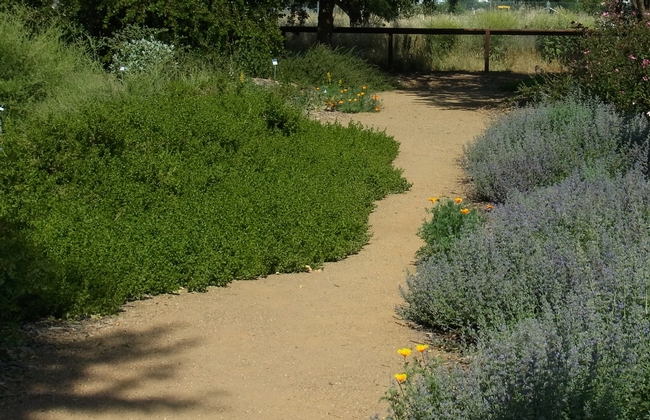“How many plants do I need?” “How should I space my plants?” are two of the common questions we hear at the Honey Bee Haven when visitors ask about designing their bee gardens. Among the factors ecologists use to evaluate how bees use a floral resource are patch size, floral diversity, and floral density.
Patch size is the area covered by the desired resource (flowering plants) in a habitat that is fragmented. Floral diversity is the number of different species of flowering plants in an area, while floral density is the number of flowering plants in an area.
For honey bees, patch size is key. The scout bees return to the hive and direct their sisters to a good resource. Honey bees are efficient foragers that will visit many flowers on one plant until they have a full load of pollen or nectar. By grouping all plants of a species into a singe patch rather than spreading them around the garden you help honey bees maximize the value of each trip to and from the hive. There is no hard and fast rule for a minimum patch size, although three feet square is an area often recommended by bee biologists.
Bumble bees, on the other hand, tend to move quickly from plant to plant. So large patches of one plant species are less important than dense patches with a diversity of flowering plants.
At the Haven we have examples of both planting styles.


Getting back to the questions posed at the beginning of the post: rather than worrying that you might not have a large enough garden or be able to provide the right mix of plants, just do it! Choose plants that will provide flowers for as much of the year as possible, with as much of the garden as you can planted with flowers. In the Davis area, bees are active year round so the Haven always has something in bloom. If the garden does include turf areas, which don't provide bee forage or habitat, try to plant your flowers so that they are in a continuous patch.